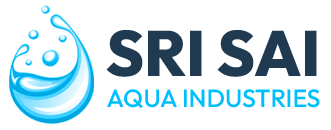Process
Jar filling process
- Empty jars are fed onto a conveyor system, either manually or automatically.
- Jars stop under filling nozzles.
- After filling, jars move to a capping station where lids are placed and secured (screwed, pressed, or heat-sealed).
- Jars are labeled with product info, branding, and dates.
- Checks for correct fill level, secure caps, and label placement.
- Jars are grouped, packed into boxes, and prepared for distribution.
Ozonation
Ozonation is a chemical water and air treatment method that uses ozone (O₃) — a triatomic form of oxygen — for disinfection, oxidation of pollutants, and odor control. It is widely used in environmental engineering, especially for drinking water purification, wastewater treatment, and air sanitation. Ozone (O₃) is a molecule made of three oxygen atoms. It is highly unstable and reactive, which makes it a strong oxidizing agent. In nature, it forms in the upper atmosphere but also near the Earth’s surface during lightning or industrial emissions.
Periodical Test
A Water Periodical Test refers to routine testing of water quality at regular intervals to ensure it meets safety, health, and environmental standards. These tests are crucial for drinking water supplies, industrial systems, swimming pools, wastewater treatment plants, and agricultural use.
Ultrafiltration (UF)
Ultrafiltration (UF) is a membrane-based filtration process used to separate suspended solids, bacteria, viruses, and high molecular weight substances from water or other liquids. It’s a physical filtration method that uses pressure to force liquid through a semi-permeable membrane with very small pores.
- UF membranes have pore sizes typically between 0.01 and 0.1 microns.
- Water or liquid is pushed through the membrane under low to moderate pressure (1–10 bar).
- Clean water (permeate) passes through the membrane.
Sample Test
A Water Sample Test involves collecting and analyzing a sample of water to evaluate its physical, chemical, and microbiological properties. This testing ensures that the water is safe for its intended use—whether for drinking, irrigation, industrial use, or discharge into the environment.
- Assess potability (drinking safety)
- Monitor pollution levels in rivers, lakes, or groundwater
- Ensure regulatory compliance (e.g., WHO, BIS, EPA)
- Evaluate treatment efficiency (before/after treatment plants)
- Prevent health risks from contaminants












